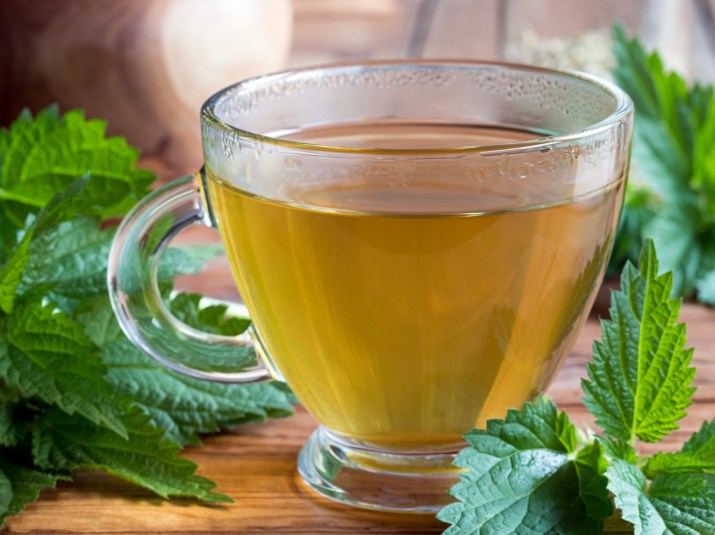Nettle Leaves Can Prevent Hair From Falling Out and Help Regrow Strands
Prickly outdoors, but great for your hair.

We all are constantly losing our hair (about 100 strands per day), but it still can be so frustrating to notice a ton of loose locks causing thin patches on our scalp. You can talk with your doctor about medical treatment options for hair loss, but if you want to try something more natural that you can do at home, you might want to take a look at nettle leaves.
The plant that sometimes causes us pain when we accidentally touch its prickly leaves outdoors can actually help your hair stay healthy and grow stronger. According to a 2018 study, nettle leaf extract contains high amounts of anti-inflammatory and antioxidant properties that can help protect our scalp from damage and stimulate new hair growth. Nettle leaves are also rich in minerals like iron, magnesium, and zinc, which can all give our follicles a great boost.
The experts at Hair Buddha recommend steeping a bunch of nettle leaves in boiling water, straining them out and letting the water cool, then using it as a hair rinse — pouring it over your strands and making sure to work it into the roots and down to the tips. You can then shampoo as normal. It apparently also helps with taming oily scalps and dandruff. More hair and less flakes, we can’t argue with that! You could go out and pick your nettle leaves if you dare, but we suggest you avoid that and have them delivered to your door instead (Buy on Amazon, $18.99).
Using products with nettle oil, like Pura D’or Anti-Thinning shampoo and conditioner is another great option for stimulating new strands on your scalp. One glowing review for those products claims, “This shampoo is the miracle I was waiting for! No exaggerating. On the FIRST wash, almost no hair on the drain, my hair smooth and shiny.“ They also say the aroma is lovely, but subtle.
You can try drinking it as a tea to get the benefits internally, but that doesn’t seem to be quite as potent as the topical applications. Of course, whichever method you go with, you should test out a small patch (or sip) before going all-in on the herbal remedy. You don’t want to end up causing more problems than you had to begin with because of a bad reaction.
Here’s hoping we can all keep more strands on our heads instead of in our hairbrush.
We write about products we think our readers will like. If you buy them, we get a small share of the revenue from the supplier.
















